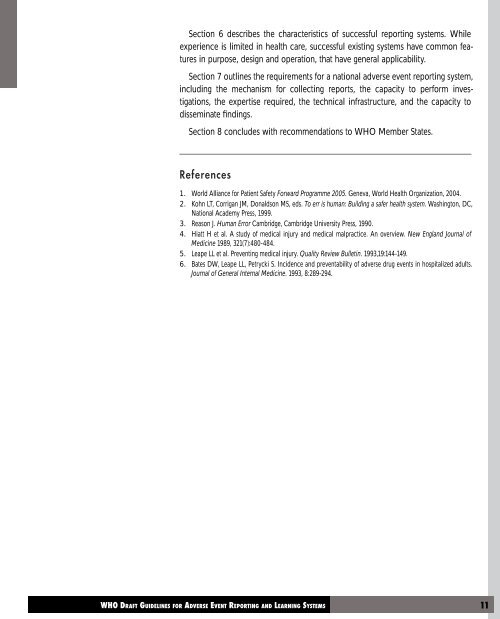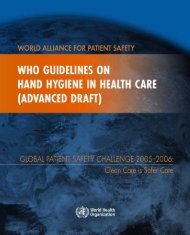Adverse event reporting.pdf
Adverse event reporting.pdf
Adverse event reporting.pdf
You also want an ePaper? Increase the reach of your titles
YUMPU automatically turns print PDFs into web optimized ePapers that Google loves.
Section 6 describes the characteristics of successful <strong>reporting</strong> systems. While<br />
experience is limited in health care, successful existing systems have common features<br />
in purpose, design and operation, that have general applicability.<br />
Section 7 outlines the requirements for a national adverse <strong>event</strong> <strong>reporting</strong> system,<br />
including the mechanism for collecting reports, the capacity to perform investigations,<br />
the expertise required, the technical infrastructure, and the capacity to<br />
disseminate findings.<br />
Section 8 concludes with recommendations to WHO Member States.<br />
References<br />
1.<br />
2.<br />
3.<br />
4.<br />
5.<br />
6.<br />
World Alliance for Patient Safety Forward Programme 2005. Geneva, World Health Organization, 2004.<br />
Kohn LT, Corrigan JM, Donaldson MS, eds. To err is human: Building a safer health system. Washington, DC,<br />
National Academy Press, 1999.<br />
Reason J. Human Error Cambridge, Cambridge University Press, 1990.<br />
Hiatt H et al. A study of medical injury and medical malpractice. An overview. New England Journal of<br />
Medicine 1989, 321(7):480-484.<br />
Leape LL et al. Pr<strong>event</strong>ing medical injury. Quality Review Bulletin. 1993,19:144-149.<br />
Bates DW, Leape LL, Petrycki S. Incidence and pr<strong>event</strong>ability of adverse drug <strong>event</strong>s in hospitalized adults.<br />
Journal of General Internal Medicine. 1993, 8:289-294.
















